Les cas EVA ont gagné en popularité dans diverses industries en raison de leurs qualités exceptionnelles et de leur utilisation polyvalente. Dans cet article, Nous examinerons de plus près le processus étape par étape impliqué dans la production de Cas EVA, Mettre en évidence l'artisanat méticuleux et l'attention aux détails requis à chaque étape.
Qu'est-ce que les cas EVA?

Les cas EVA sont des solutions de stockage de protection qui sont fabriqués à l'aide d'un matériau appelé acétate d'éthylène-vinyle, ou Eva pour faire court. Eva est bien considérée pour sa durabilité, flexibilité, et des propriétés uniques telles que la résistance à l'impact, résistance à l'eau, et l'absorption des chocs. Ces qualités font des cas EVA Un choix idéal pour diverses industries, y compris l'électronique, médical, automobile, et activités de plein air. Les étuis EVA peuvent être personnalisés pour s'adapter à des produits spécifiques, Assurer un ajustement sécurisé et ajusté, tout en offrant également des opportunités de marque avec une gamme de couleurs disponibles. Cas EVA personnalisés Fournir une protection sans précédent pour les articles précieux, En faire un choix préféré pour les organisations et les individus.
Processus de fabrication étape par étape de cas EVA
- Préparation des matériaux
- Stratification
- Coupe
- Préchauffage
- Thermoformage / moulage
- Coup de découpage
- Couture
- nspection
- Conditionnement
Étape 1: Préparation des matériaux
La première étape de la production de cas EVA est la préparation des matériaux. Normalement, une coque EVA se compose de trois couches, extérieur matériel, couche intermédiaire EVA, et intérieur matériel.
Il existe une large gamme d'options disponibles pour le matériau extérieur, y compris des choix comme Multipandex, 600D-polyester, 1680D-nylon, Unité centrale, et plus. En plus, Divers matériaux intérieurs tels que Velvet, multispandex, lycra, et la toison polaire peut être sélectionnée pour améliorer les caractéristiques fonctionnelles des cas.

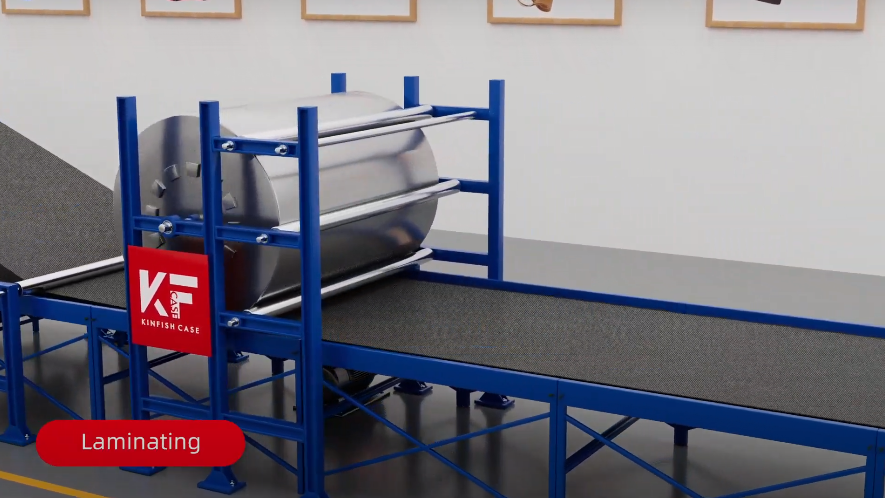
Étape 2: Stratification
Une fois l'extérieur et le matériau intérieur, Les trois couches de la coquille EVA sont liées ensemble pour renforcer la structure du boîtier. Cette étape garantit une construction sécurisée et fiable pour l'affaire, Comme les couches sont effectivement fusionnées pour créer une unité cohésive.
Étape 3: Coupe
Après le processus de laminage, La feuille de coque EVA est coupée précisément dans la forme souhaitée en utilisant des techniques de coupe avancées telles que la coupe de la matrice ou le CNC (Contrôle numérique informatique) coupe. Cette étape implique l'utilisation de machines spécialisées pour atteindre la précision et la cohérence dans la forme et la taille. La coupe précise garantit que l'étui dur EVA s'adapte parfaitement au produit prévu, ne laissant aucune place pour le mouvement ou les dommages potentiels.


Étape 4: Préchauffage
Le préchauffage est une étape critique dans le processus de fabrication du cas EVA. Les feuilles EVA coupées sont placées dans une chambre de préchauffage pour atteindre la température optimale pour le stade de thermoformage. Ce processus de préchauffage permet aux feuilles de devenir malléables, faciliter le processus de moulage ultérieur.
Étape 5: Thermoformage / moulage
Une fois les feuilles EVA pré-chauffées, Ils sont transférés dans un moule. Le moule est personnalisé selon les dimensions et la forme spécifiques requises pour le boîtier de coquille dure EVA. La mousse Eva chauffée est ensuite soigneusement placée dans le moule et soumise à une combinaison de chaleur et de pression pour obtenir la forme souhaitée. Ce processus de thermoformage garantit que la mousse EVA est conforme au moule, Création d'un cas précis et personnalisé.

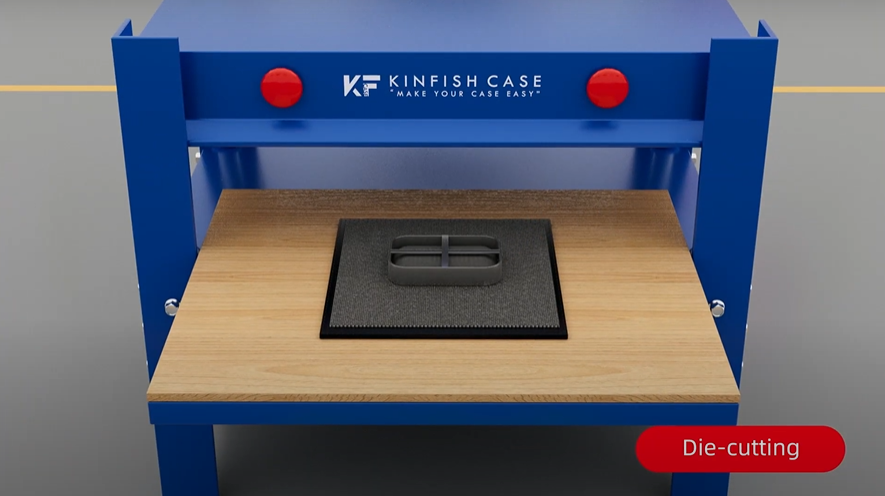
Étape 6: Coup de découpage
Après le processus de thermoformage, Tout excès de matériau est retiré par la coupe. Des machines de coupe spécialisées équipées de lames pointues coupez précisément le boîtier en mousse EVA à sa forme finale. La coupe de matrices fournit des bords propres et assure une finition polie.
Étape 7: Couture
La couture est un processus essentiel qui améliore considérablement la durabilité des cas EVA. Les artisans qualifiés coudent soigneusement les marges de l'affaire, Assurer une liaison renforcée et sécurisée entre les couches. Ce processus de couture méticuleux joue un rôle crucial dans le renforcement de l'intégrité structurelle du cas EVA, le rendant très durable et durable.
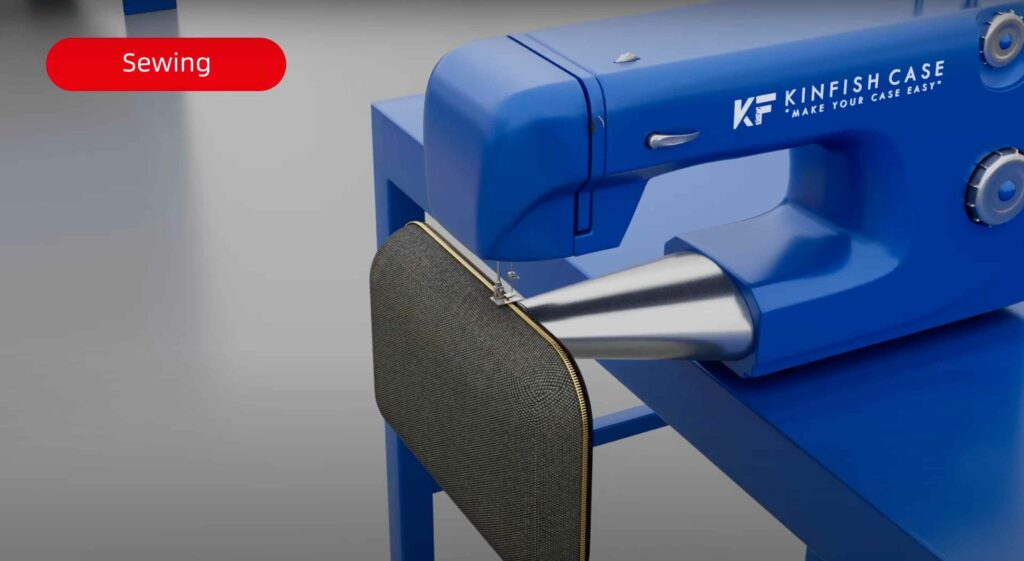
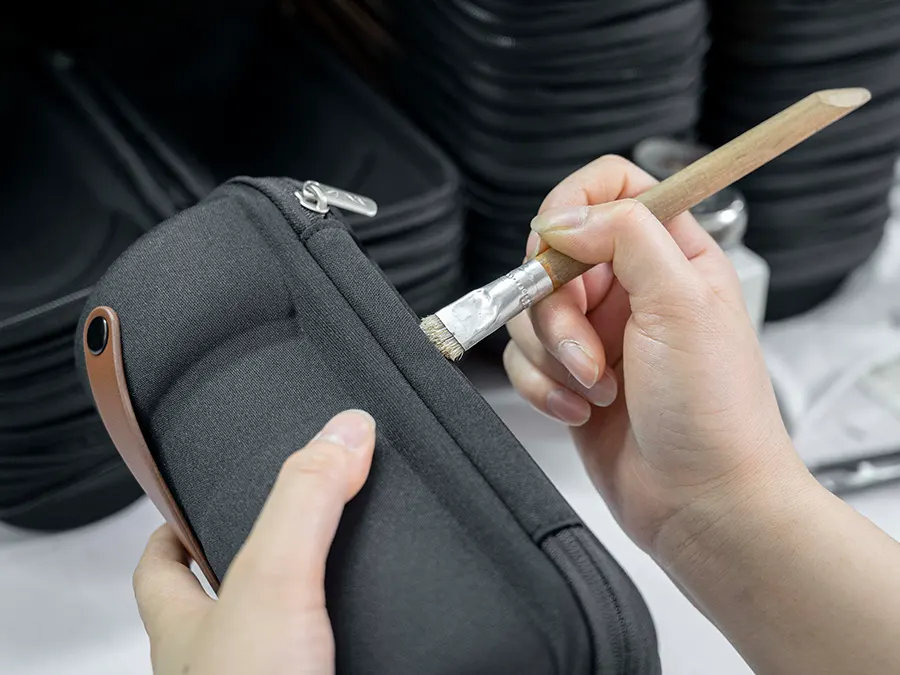
Étape 8: Inspection
La qualité est de la plus haute importance dans la production de cas EVA. Une inspection exhaustive est effectuée pour évaluer les éléments de chaque cas, y compris la qualité de la fermeture éclair, densité de couture, et l'apparence générale. La qualité de la fermeture éclair assure une fermeture lisse et sécurisée, tandis que la densité de point garantit la longévité du cas. L'inspection de l'apparence garantit que l'affaire EVA répond aux normes esthétiques, refléter l'image de la marque. Seuls les cas qui transmettent l'inspection rigoureuse sont jugés appropriés pour le marché.
Étape 9: Conditionnement
Une fois que les cas EVA ont subi une inspection approfondie et respecté les normes requises, Ils sont soigneusement emballés pour assurer un transport et un stockage en toute sécurité. Des boîtes ou des matériaux d'emballage conçus sur mesure sont utilisés pour protéger les étuis des rayures ou de tout autre dommage potentiel.
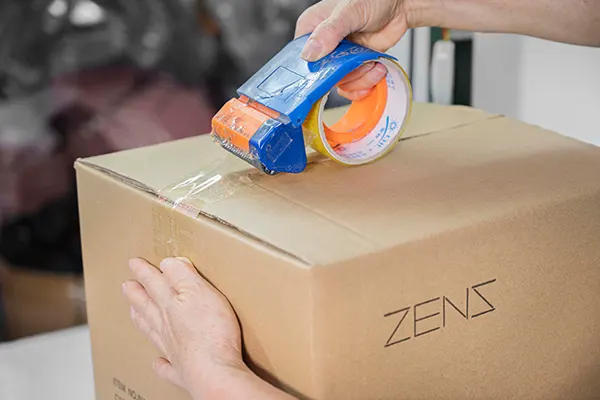
Pourquoi choisir Eva Cases?
Les cas EVA sont devenus très recherchés et largement acclamés dans de nombreuses industries. Plongeons dans la myriade d'avantages que les cas EVA offrent, En faire un actif indispensable pour les entreprises et les particuliers qui recherchent des solutions de stockage fiables et protectrices.
- Protection sans précédent: Les cas EVA offrent une protection sans précédent, Avec leur nature absorbante de choc, sauvegarde efficacement les éléments précieux des dommages potentiels causés par les impacts ou la mauvaise gestion.
- Durabilité et longévité: Construit à partir de matériaux de haute qualité, Les étuis EVA sont durables et durables, capable de résister à une utilisation quotidienne et à protéger les outils, équipement, et les appareils de l'usure.
- Personnalisation et montage précis: Les étuis EVA peuvent être personnalisés pour s'adapter précisément à des produits spécifiques, Assurer une protection et une organisation optimales. Des fonctionnalités supplémentaires telles que les compartiments et les séparateurs peuvent être incorporées pour améliorer la fonctionnalité.
- Résistance à l'eau: Les cas EVA sont très résistants à l'eau, Offrir une protection efficace contre l'humidité, déversements accidentels, et exposition aux environnements humides, Les rendre idéaux pour les industries où les dommages liquides sont une préoccupation.
- Léger et portable: Les cas EVA sont légers, les rendre pratiques et facilement portables sans compromettre la protection. Ils offrent une solution de stockage sans tracas pour les professionnels en mouvement.
- Opportunités de marque: Les cas EVA permettent une marque avec une large gamme d'options de couleurs et l'inclusion de logos, graphique, ou d'autres éléments pour présenter l'identité de la marque et améliorer la reconnaissance.
- Polyvalence entre les industries: Les cas EVA sont polyvalents et applicables dans diverses industries telles que l'électronique, médical, automobile, et équipement extérieur. Ils garantissent la sécurité des articles précieux, quels que soient les besoins spécifiques de l'industrie.
Conclusion
La production de cas EVA implique un processus méticuleux et complexe, mettre l'accent sur les normes les plus élevées de l'artisanat. De la préparation des matériaux à l'emballage, Chaque étape joue un rôle vital dans la création de durable, polyvalent, et des cas attrayants visuellement. Cas EVA’ Les caractéristiques uniques et la nature personnalisable ont fait d'eux le choix préféré pour diverses industries, Offrir des opportunités de protection et de marque inégalées.
















